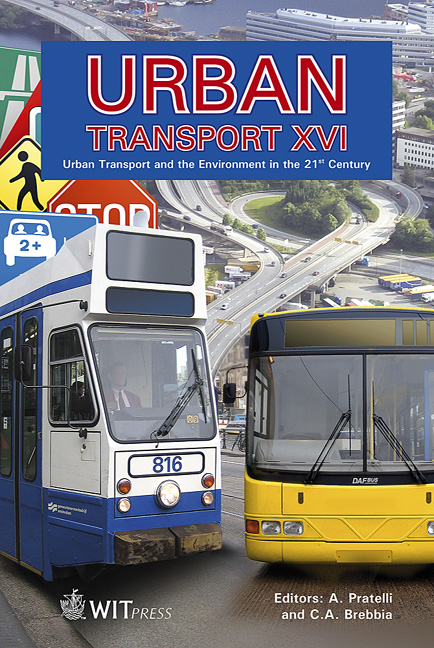A Tool For Tracing Emergency Vehicles During Evacuation
Price
Free (open access)
Transaction
Volume
111
Pages
9
Page Range
325 - 333
Published
2010
Size
369 kb
Paper DOI
10.2495/UT100291
Copyright
WIT Press
Author(s)
A. Polimeni, A. Quattrone & A. Vitetta
Abstract
The topic discussed in this paper concerns the design of the best routes for emergency vehicles to save weak users. The design problem is formalized in order to allow the emergency vehicles (ambulances) to rescue all weak users in the shortest time. In particular, in this paper a hardware-software tool that can be used to collect real-time data for the implementation of the proposed models is analyzed. The tool is designed to identify the paths (mapping the vehicle position at fixed time intervals) and to register the vehicle stops at the weak user’s location. Keywords: evacuation, path design, vehicle routing problem, emergency conditions. 1 Introduction Evacuation procedures are used when faced with catastrophic events, both natural (floods, hurricanes, wildfires, and so on) and man-made (nuclear and chemical accidents, terrorist attacks and so on). In emergency management [1] two phases can be identified [2]: a planning phase and an operative phase. The first one concerns the operations planning (protocols) to be implemented in an emergency in the case of evacuating the population, the second one concerns the application of the procedures provided in the planning phase and their possible modifications. This work is a part of the SICURO research project [3] carried out by the LAST-Laboratory for Transport Systems Analysis of the Mediterranean University of Reggio Calabria. The objective of the SICURO project is the development of models and guidelines for evacuation demand simulation [4–6], supply and demand-supply interaction simulation [7–9], supporting path design
Keywords
evacuation, path design, vehicle routing problem, emergency conditions





